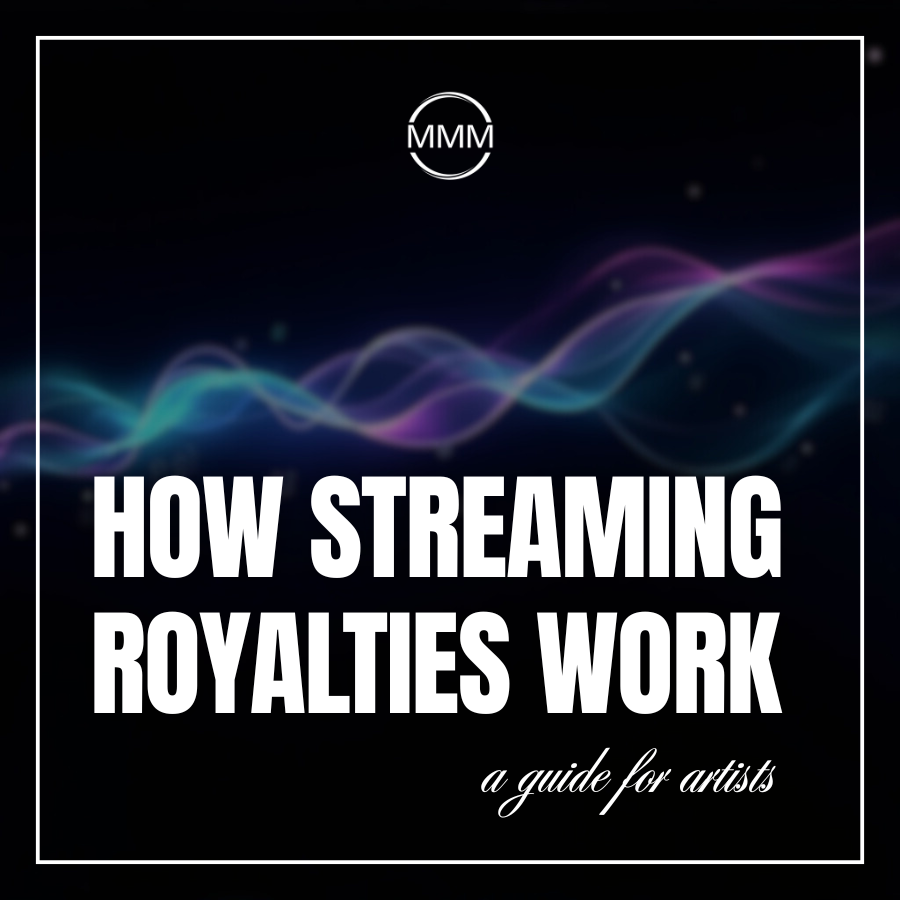How Streaming Royalties Work: A Guide for Artists
In today’s music industry, streaming dominates the way we consume music — but many artists still ask: How streaming royalties work?
The truth is, the process isn’t always transparent or easy to understand. But if you want to turn streams into income, it’s crucial to grasp how platforms like Spotify, Apple Music, and YouTube calculate what they pay artists.
Let 92MMM break it down.

What Are Streaming Royalties?
Streaming royalties are the payments artists, songwriters, and rights holders receive when their music is played on digital streaming services (DSPs) like:
- Spotify
- Apple Music
- Amazon Music
- YouTube Music
- Deezer, Tidal, and others
These royalties are split into two key parts:
- Recording Royalties (for the owner of the sound recording — usually the label or independent artist)
- Publishing Royalties (for the songwriter/composer)
How Are Streaming Royalties Calculated?
Streaming platforms don’t pay a fixed amount per stream. Instead, they use a complex formula based on several factors:
Key Factors in Streaming Royalty Calculations:
| Factor | How It Affects Royalties |
| Platform’s Total Revenue | Subscription fees + ad revenue pooled monthly |
| Total Number of Streams | The more streams overall, the lower the per-stream payout |
| Your Share of Streams | Your percentage of total streams on that platform |
| Subscription vs Free Listeners | Paid subscribers generate higher payouts than free/ad-supported streams |
| Territory & Currency | Streams from countries with lower ad rates = lower payouts |
| Rights Ownership Split | How royalties are divided between labels, distributors, songwriters, publishers |
Example: Spotify Streaming Royalty Calculation (Simplified)
Let’s say:
- Spotify made $1 billion in one month.
- There were 100 billion total streams that month.
- Your song had 1 million streams.
Your song represents 0.001% of total streams → your share of the revenue is $10,000 (before splits).
But:
- Spotify pays labels, distributors, and publishers separately.
- You might receive only a portion depending on your contracts.
On average, Spotify royalties range from $0.003 to $0.005 per stream — but this fluctuates.
Who Gets Paid for Streaming Royalties?
| Role | Royalty Type |
| Artist | Recording royalties |
| Label | Recording royalties (if under contract) |
| Songwriter | Publishing royalties |
| Publisher | Publishing royalties |
If you’re an independent artist who writes and records your own music, you can receive both the recording and publishing royalties.
Why Streaming Royalties Vary by Platform
| Platform | Average Payout Per Stream |
| Spotify | $0.003 – $0.005 |
| Apple Music | $0.007 – $0.01 |
| YouTube Music | $0.001 – $0.002 |
| Amazon Music | $0.004 – $0.005 |
| Tidal | $0.012 – $0.015 |
Apple Music and Tidal pay higher rates because they don’t rely as heavily on free, ad-supported streams.
How to Maximize Your Streaming Royalties
Release Regularly: More music = more streams = more earnings
Claim Publishing: Register with a Performing Rights Organization (PRO) and Mechanical Licensing Collective (MLC)
Distribute Widely: Use an aggregator like DistroKid, TuneCore, or CD Baby to get on all major platforms
Grow Fan Engagement: Streams from loyal listeners and playlist placements boost royalties
Track Earnings: Use platforms like Songtrust, Audiam, or your distributor’s dashboard
Final Thoughts: Understanding Streaming Royalties Empowers You
Streaming isn’t going anywhere. Understanding how streaming royalties work is the first step to building sustainable music income.
While per-stream payouts may seem small, over time and with smart release strategies, streaming can become a powerful revenue source for independent artists.
Need help setting up your distribution or maximizing royalties?
At 92MMM, we help artists protect their rights, grow their streams, and build careers that pay.

